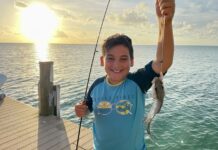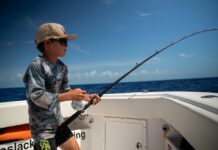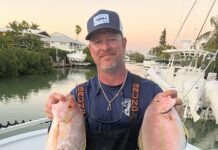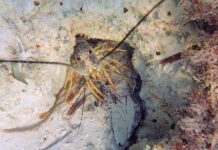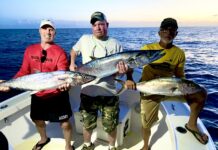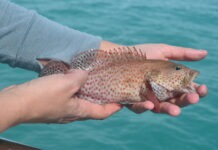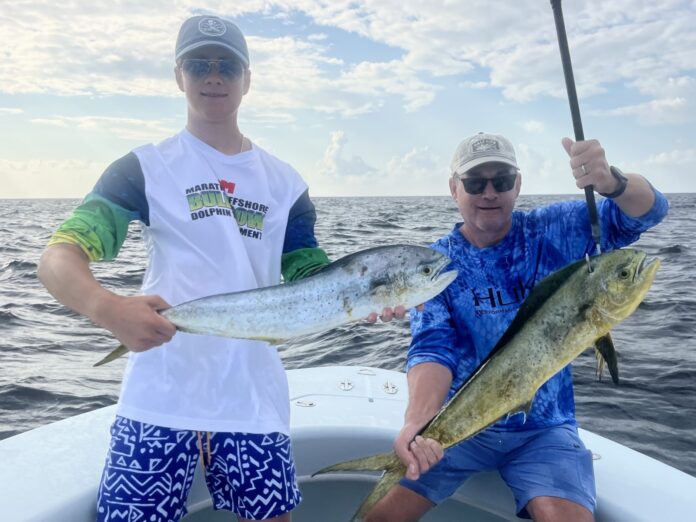
Better late than never: finally the mahi bite has turned on. With the end of the mangrove snapper spawn upon us, your chance to go offshore and catch some exciting mahi has finally come.
Mahi have been anywhere from 250 feet of water and deeper. Unlike what many believed we were in store for this summer, sargassum grass has practically been nonexistent, so all the fish that we are finding are either under working birds or some type of floating debris. Our favorite birds to find offshore are frigatebirds. Mahi will chase prey fish up to the surface, giving the frigate birds a shot at an easy meal. Since we can only see the bird, this gives fishermen a visual cue of where a mahi or a school of mahi may be feeding.
Floating debris such as wooden pallets or discarded cargo nets in essence create their own ecosystems by providing shelter for shrimp, crabs and small jacks in the open water, which mahi love to target for their feasts.
Although you may need to weed out a few small ones, the majority of the fish are schoolies or heavy lifters. We categorize mahi based on their size measured from the tip of their nose to the inner fork of the tail, also known as their fork length. These classifications range from peanuts (20 inches or less), schoolies (20 to 30 inches), heavy lifters (30 to 38), gaffers (38 inches or more) and slammers (more than 40 pounds).
A good trolling spread consists of a rigged ballyhoo in each outrigger and two trolling baits such as a Billy Bait or three-inch artificial lure on the flatlines. I like to keep my baits out of the prop wash (air bubbles created by cavitation of the prop or the exhaust of the engine). Depending on the type of boat you are fishing from, the distance of your trolling baits will differ. Ideally, you’ll want to have your rigged ballyhoo a minimum of 30 feet behind your flatlines to avoid having your spread get tangled when making a turn.
It’s all personal preference on what color skirt to use on your ballyhoo – if you use one at all. I prefer a naked ballyhoo because it appears more natural to the mahi. I rig my ballyhoo on a 6/0 long shank Mustad hook with 80-pound leader and a copper wire to secure the ballyhoo to the rig.
Many people use oversized tackle for mahi, but they are much more enjoyable to catch on light tackle. My primary set up is a 6500 series spinning reel on a seven-foot medium-to-light-action rod, spooled with 20-pound monofilament. To attach my main line to my leader I suggest using a bimini twist in order to create a shock absorber and a stronger connection to the leader. I prefer not to use braided fishing line because it does not absorb the shock of angler error or have any stretch while fighting a fish.
Mahi-mahi is one of the most commonly-served fish at restaurants here in the Florida Keys. The white, flaky texture of the filet will absorb whichever seasonings or herbs you decide to cook with. Preparations for this catch include, but are not limited to: fried, blackened, grilled, broiled, Francaise or diced for tacos. Most restaurants throughout the Keys have a cook-your-catch option where they will cook up to one pound of your freshly-caught mahi and prepare it a variety of ways with a few sides. Most places have a signature style unique to them that is delicious.
While the bite is hot, get out there and bend your rods.
To book a trip with Top Notch Sportfishing, call Capt. Bill at 732-674-8323 or visit topnotchkeysfishing.com.





